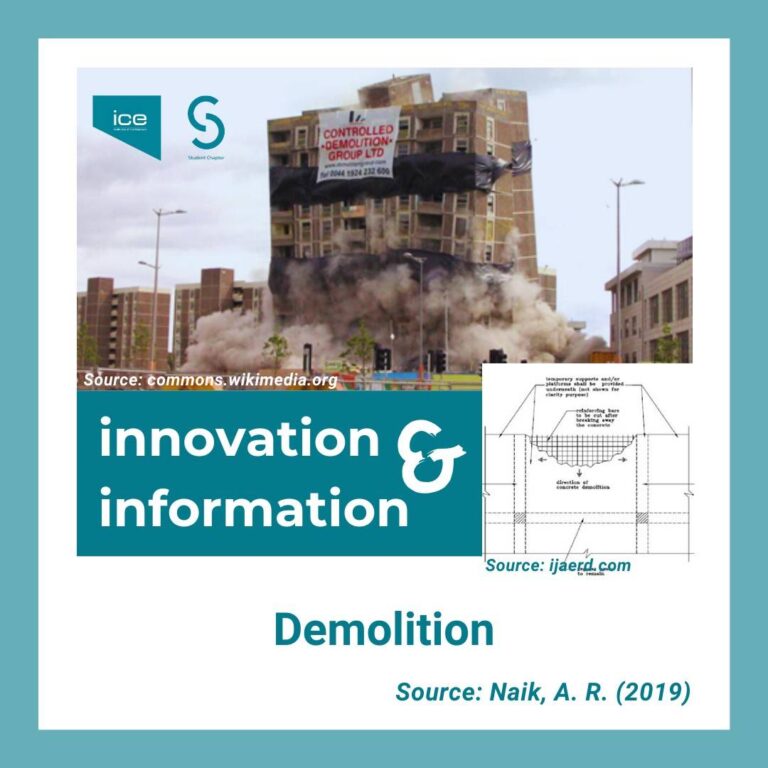Demolition
In order to make Indonesia a developed country, it is certain that they need to have a sustainable development in many aspects such as the infrastructure aspects. In addition, continuous construction is required. However, in geographical terms, Indonesia only has 23.62% of the land with half of it being protected forest and home to about 300,000 wildlife species. That is why demolition is needed. Demolition is an activity of disassembling and removing parts of a building until its fully collapsed. It also keeps the continuous construction going while saving the natural wealth of Indonesia.
The demolition processes are:
- Tendering stage, a survey of the demolition planned building
- The pre-demolition stage, including the site preparation, decommissioning, and soft screening
- Demolition stage, the structural elements are demolished, this structural demolition has three types which are Progressive Demolition, Deliberate Collapse Mechanism, and Deconstruction. Methods that could be used in this process are:
- Demolition of the building by Top-Down – Manual Method,
- Demolition of Cantilevered Structures and Balconies,
- Demolition of Floor Slabs,
- Demolition of a building by Top-Down – By Machines,
- Demolition of building by Wrecking Ball and
- Demolition of a building by implosion
- Post-demolition stage prepares for new building construction in the area.
The waste that is produced from the demolition process is not a little thing, it may fill all of the building demolition sites. In order to achieve the 9th goal of the sustainable development goals which is “Industry, Innovation and Infrastructure” in a demolition site, the waste material needs to be managed.
The management of waste includes collection, removal, disposal, and including recycling the waste. In other countries, most of the waste is sent to the waste treatment for recycling and proceed to go into the recycling stage. The processed waste will then either be used for secondary use or will be returned and be used for production.
In conclusion, demolition has a good impact to maintain the infrastructure development and the wildlife conservation of Indonesia only if the waste products from the activity are being taken care of.
Reference:
Shweta, O. R. & Pravin, V. K. (2014). Demolition of Buildings – An Overview. International Journal of Advance Engineering and Research Development (IJAERD). 1(6): 1-8. ISSN: 2348 – 4470. 1. 8. http://www.ijaerd.com/papers/finished_papers/ijaerd%2014-0268.pdf


